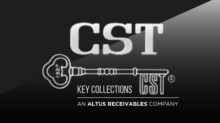article originally published on Credit Today.
Your staff collectors have done their best and gotten nowhere. It’s time to refer the account to an agency. That means it’s time to provide the agency with all the documentation they will need and to provide it quickly, maybe through access to your computer files.
The ideal account placed for agency collection is open and operating, and there is information specifically on who has to be reached and how to reach them. The account is well documented with invoices, statements, a credit application, enforceable personal guarantees for interest and collection fees–not just unenforceable suggestions on the invoice.
That description comes from Pete Roth, president of CST Company (see Collection Management–Be Quick but Don’t Hurry). And, not surprisingly, many accounts put out for agency collection fall well short of this ideal. Sometimes, overworked credit managers just send the agency a spreadsheet listing delinquent customers’ account numbers, company names, addresses, phone numbers and contact names, along with the span of dates for past due invoices and total amount owed.
“Those are the very basics for us to get started,” notes Roth. “What’s lacking are the back-up documents, but at least we have what we need to get things underway.” And, for a significant number, just getting underway can be enough. There are plenty of debtor companies out there that are not deadbeats. It’s just that they are not very good at managing their businesses. When a collection agency is suddenly involved and says, “You have to get this paid. It’s an important part of the process,” they realize there is no more avoiding this. It’s, “Oh, my goodness. Yes, we’ll send a check.”
The payoff from agency referrals should go well beyond saving time. And proper documentation beyond copies of invoices, statements, and the credit application is the key.
“So, we don’t even need a copy of the invoice,” says Roth. “They have it already. They know it’s owed, and we’re just being the consistently squeaky wheel on the client’s behalf.”
The management-challenged debtor, or maybe those accounts that can be confirmed to be out of business, might make up to 20 percent of those listed on an incoming spreadsheet. A majority of the rest may continue to be evasive: “I need a copy of the invoice and a statement.” That sends the agency back to the client who may look at it as, “Well, of the 100 accounts I gave you on the spreadsheet, if there are 20 you can close without any documentation, I’ve saved that much time.”
But the payoff from agency referrals should go well beyond saving time. And proper documentation beyond copies of invoices, statements, and the credit application is the key.
If we know the different excuses they’ve used, they can’t start back at excuse number 1.
“It’s wonderful if they can provide us with their collection notes listing all of the contacts made with the account before it is referred to us,” he says. “If we have the full repertoire of excuses in hand and the debtor claims not to have received an invoice, we can say, ‘According to the collection notes from our client they sent the invoice to you on these dates . . .’ If we know the different excuses they’ve used, they can’t start back at excuse #1. If they tell us they are in the middle of changing banks and things are a bit of a mess, but our client’s notes say they were supposedly changing banks two months ago, how likely is it they’re doing so again? We can see that the excuses being given have been asked and answered before. It demonstrates to the debtor company that we have communicated very well with our client, that we are on the same page and that there will be no kicking this can down the road any further.”
Today’s ultimate documentation process, and perhaps the standard one in the future, will incorporate the client’s data processing system. CST now has some clients who give them Read-Only access to their database. “We can’t go in and change anything, but we have secure access,” Roth says. “So, we can pull off invoices, statements, credit apps and so on. We’re saving them the time and trouble.”
But there are, of course, some issues. For one, the client’s IT people tend to be anxious about cyber security. For another, corporate counsel often wants no “outsiders” having access to computer files.
“We are their agent, so it is essentially still them doing it,” he notes. “But accessibility to this information sometimes is rejected by counsel, even if we offer to sign an NDA or some other agreement.”
Some will agree to put information on a secure file transfer protocol (SFTP) server. Still they’re having to gather it and put it there. “We also had one client where their customers are given access to a portal to pull off what they need, and they have given us that same access. So, the facility to do this is available. It’s just that the comfort level may not always be there with the client.”
Roth adds that the increased speed in the collection process that computer access to documentation makes possible can be a significant advantage in itself. He’s had the experience, after spending weeks trying to get the proper documentation, of telling the client that they have no choice but to close the file. Then, down the road, the documentation appears.
“The client wants us to reopen the file. But the trail is cold. If it’s not a total loss, it may take litigation–just to get the debtor’s attention. The debtor is emboldened and feels that if they’ve out-waited you before, maybe they can do it again.”
The bottom line is that your collection agency can do a lot to help you, but there may be ways for you to help them help you.
